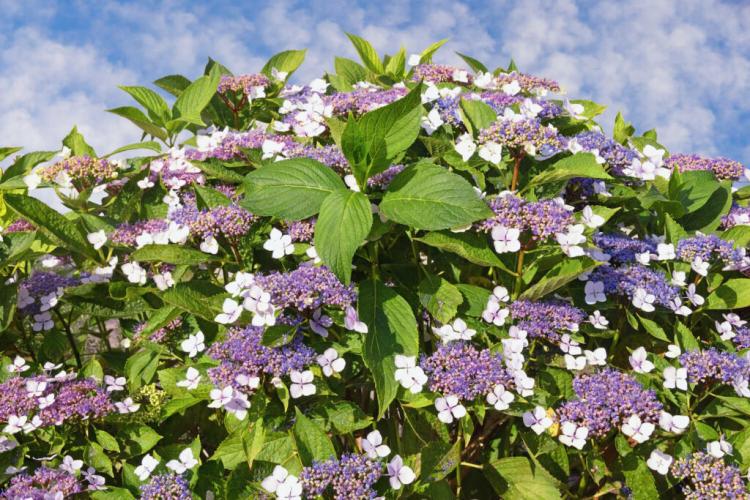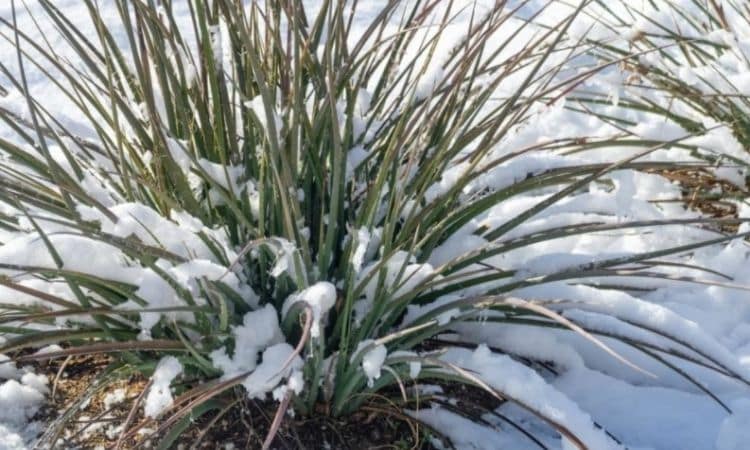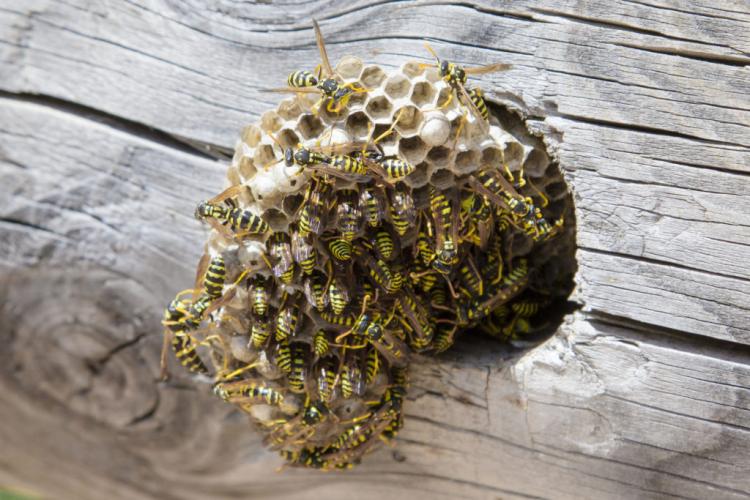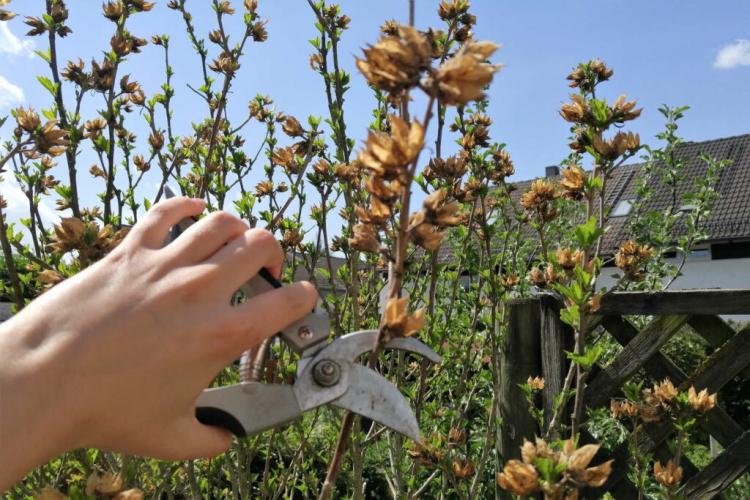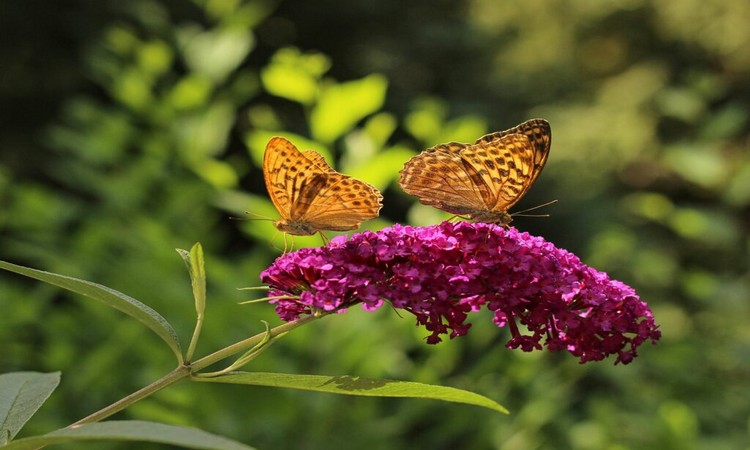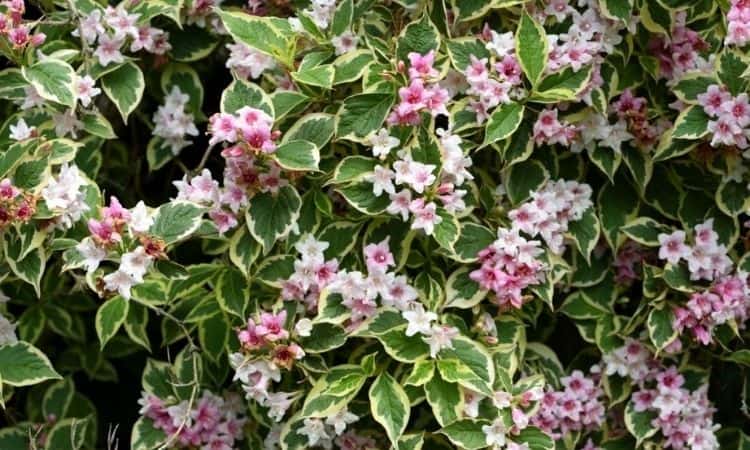Velvet hydrangea: planting, caring and cutting
The velvet hydrangea is also known under the name rough hydrangea or fur hydrangea. We will introduce you to the most beautiful varieties of velvet hydrangea and explain what needs to be considered when planting and caring for them.
The velvet hydrangea is characterized by the fine hairiness of the leaves, which is also eponymous. Another special feature is the two-tone nature of its flower panicles.
Velvet hydrangeas: flowering time, origin and characteristics
Table of Contents
The velvet hydrangea ( Hydrangea Aspera ssp. Sargentiana ) is considered a wild species and originally comes from East Asia, where it thrives in light, moist deciduous forests. It grows as an upright, perennial subshrub and is around 2 to 3.5 meters high and just as wide. Above the oppositely arranged, egg-shaped, pointed leaves, which have a dull green color and are delicately hairy on both the upper side and the underside, about 15 to 20 centimeters large panicles of flowers appear from July. You can see the pretty panicles until August.
They are made up of fertile, i.e. fertile inner flowers and sterile outer flowers. The light purple-colored inner flowers predominate. In the course of flowering, the color changes more into a purple to blue shade. The outer pseudo-flowers are composed of 4 to 5 petals and are light pink to white in color. Insects find neither pollen nor nectar in the outer flowers, but the inner flowers provide them with plenty of food.
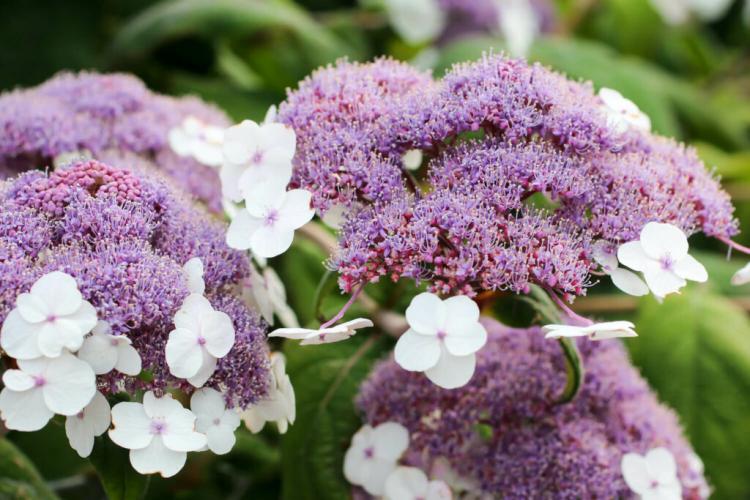
The question remains: is the velvet hydrangea poisonous? Like other hydrangea species, velvet hydrangeas are only mildly poisonous. The flowers and leaves in particular contain hydrocyanic acid glycosides, for example, which are toxic. However, the concentration is comparatively low, so that a large number of plant parts would have to be ingested before poisoning occurs. Nevertheless, consumption is not recommended and children and pets, in particular, should be protected accordingly.
The most beautiful varieties of velvet hydrangea
Derived from the original velvet hydrangea ( Hydrangea Aspera ssp . Sargentiana ), there is the cultivar Hydrangea Aspera ‘ Macrophylla’. This forms particularly large panicles of flowers and leaves, but otherwise hardly differs from the classic velvet hydrangea.
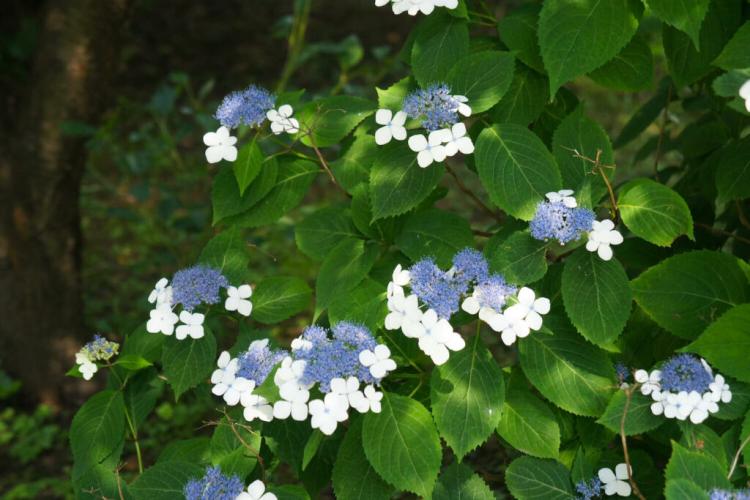
Planting velvet hydrangea: location requirements
Velvet hydrangeas prefer partially shaded, protected locations in the garden. The soil should be acidic to neutral but in no case rich in lime. It should also be humic, fresh to moist, and nutritious.
You might so like: Oakleaf Hydrangea: Varieties, Location And Care
If your soil does not meet these requirements, you can use targeted measures to create improved soil conditions. Very sandy or very clayey soils should be mixed with a high-quality and rather nutrient-rich potting soil and thus improved. It may also be necessary to lower the soil pH value by mulching with needle litter, bark mulch, or grape pomace and enriching the nutrients with organic fertilizers. Also, keep in mind that velvet hydrangeas can grow quickly and become very large under the right conditions. So choose a place in your garden where your velvet hydrangea can develop undisturbed.
Tip: By rooting shoots lying on the ground and also by the formation of root shoots, the velvet hydrangea can spread over an area, which can make it much wider than it is tall with age.
The right time to plant velvet hydrangeas in spring. Dig a sufficiently large planting hole. It should have about twice the volume of the plant container. Put some loose soil in the hole and then place the plant ball in it so that the top edge of the ball is flush with the edge of the plant hole. By loosening the plant ball with your hands or a spade, you are making minor injuries to the roots. These injuries stimulate root growth. Then the hole is filled with earth. Press down well and water generously.
Start fertilization with horn shavings or a special hydrangea fertilizer such as organic hydrangea fertilizer as well as a mulch layer of leaves or bark mulch as protection against evaporation give the velvet hydrangea the best starting conditions for good growth.
Care of the velvet hydrangeas
Velvet hydrangeas have a very high demand for water. Regular fertilization supports growth and flowering. The velvet hydrangea can be cut back if necessary. As a rule, no further maintenance measures are necessary.
Fertilize and water the velvet hydrangea
In addition to the above-mentioned initial fertilization, velvet hydrangeas do not have to be fertilized. Regular replenishment of the nutrient depot is only recommended for hydrangeas planted in pots. However, due to its high growth speed, the velvet hydrangea is not particularly suitable as a pot plant anyway. If you are looking for a suitable hydrangea for your balcony, it is best to choose a plate hydrangea or garden hydrangea.
You might so like: Hydrangea Serrata (Mountain Hydrangea): Everything To Plant, Care And Cut
The velvet hydrangea, on the other hand, does not survive long without water. Hydrangeas are among the thirstiest garden plants and need to be watered regularly. In prolonged dry periods in summer, velvet hydrangeas should even be watered twice a day. Always use rainwater or lime-free tap water for watering, as hydrangeas are sensitive to lime.
Tip: If the velvet hydrangea has too many nutrients available, it can make it susceptible to frost. If you want to avoid damage from the winter cold, you no longer fertilize the plant after July so that the shoots can harden until winter.
Cut the velvet hydrangea
Pruning should generally be done in spring. Shoots that have died in winter should be removed with secateurs. If necessary, the velvet hydrangea can also be severely pruned if its crown becomes too expansive. However, the hydrangea can react to a strong pruning in the following year by not blooming.
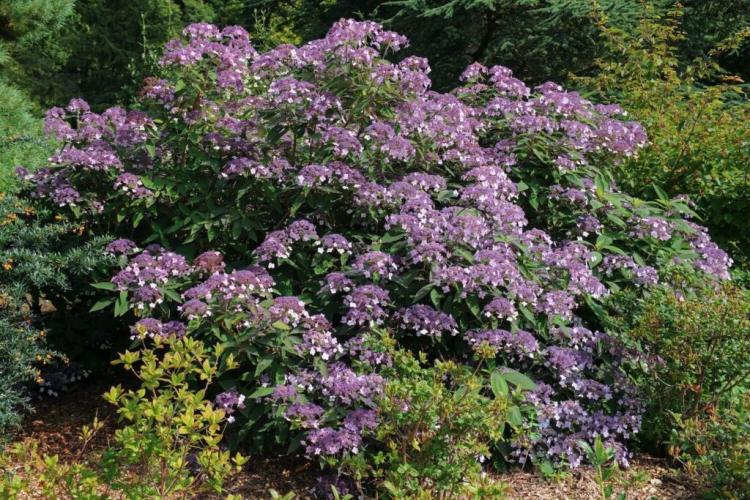
To prevent the velvet hydrangea from spreading too much, root runners can be cut off with a spade and disposed of in the compost or they can be replanted in another place in the garden.
Hibernate velvet hydrangea
Velvet hydrangeas are hardy with us. When buying, always choose robust plants from specialist retailers that have been well hardened. To be on the safe side and avoid frost damage to the roots of the hydrangeas, you can cover the ground around the hydrangeas with leaves and fir branches. This measure is particularly recommended for young or newly planted velvet hydrangeas.
Velvet hydrangea propagate
Velvet hydrangeas can be propagated using cuttings or cuttings. While the cuttings are leafy when propagating cuttings and are cut in spring, the dead cuttings are not cut until winter when propagating cuttings. In the period between late autumn and spring, cut offshoots that have just grown from the last season from the hydrangeas. Then several 10-15 cm long cuttings are cut from it, each with a pair of eyes (buds) at the top. The thin shoot tip is not used.
You might so like: Hydrangea Macrophylla (Farmer Hydrangea): Plants, Care, And The Best Varieties
The cuttings can then either be inserted directly into the flower bed or flower pots filled with substrate. Care must be taken that they get into the earth the right way round. Choose peat-free sowing soil for the flower pots. Mix in some sand or perlite as well. This increases the air capacity of the earth and achieves better-rooting success. The cuttings are stuck so far into the earth that only the top 2 – 3 cm protrude. The cuttings will take root by next spring. Young velvet hydrangea plants grown in flower pots should be transplanted into the garden by the end of March.
As an alternative to propagating cuttings, the root runners of the velvet hydrangea can be cut off and replanted elsewhere. With a little luck, new velvet hydrangeas will develop from them.
If you would like to get to know other types of hydrangea, you may be interested in our special article on panicle hydrangea.
